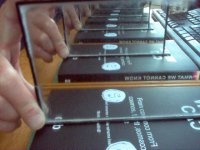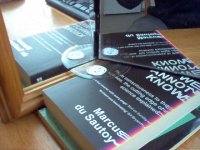Just want to say, for some reason I wondered what kind of acronyms where used for SLUG. In my opinion the coolest one is: Stochastically Lighting Up Galaxies
Galu, you could just say that to people, that you're very into SLUG
-"what's that?"
-"Well, I'm trying to Stochastically Light Up Galaxies"
Don't go any further into it and just sort of imply that you're trying to be and intergalactic badass, wreaking havoc on the known universe. 😀
Don't say anything about this here:
https://arxiv.org/pdf/1502.05408.pdf
Edit:
Just got to quote this paper, I think it sounds awesome. 😀
Core Slug Code, cloudy slug, cluster slug ohyeah! We do not PLAY slug, do we? nope!
Galu, you could just say that to people, that you're very into SLUG
-"what's that?"
-"Well, I'm trying to Stochastically Light Up Galaxies"
Don't go any further into it and just sort of imply that you're trying to be and intergalactic badass, wreaking havoc on the known universe. 😀
Don't say anything about this here:
https://arxiv.org/pdf/1502.05408.pdf
Edit:
Just got to quote this paper, I think it sounds awesome. 😀
Core Slug Code, cloudy slug, cluster slug ohyeah! We do not PLAY slug, do we? nope!
2 THE SLUG SOFTWARE SUITE
The slug software suite is a collection of tools designed to
solve two related problems. The first is to determine the
probability distribution function (PDF) of observable quantities (spectra, photometry, etc.) that are produced by a
stellar population characterized by a specified set of physical parameters (IMF, SFH, cluster mass function, and an
array of additional ancillary inputs). This problem is addressed by the core slug code (Section 2.1) and its adjunct
cloudy slug (Section 2.2), which perform Monte Carlo simulations to calculate the distribution of observables. The
second problem is to use those PDFs to solve the inverse
problem: given a set of observed properties, what should we
infer about the physical properties of the stellar population
producing those observables? The bayesphot package provides a general solution to this problem (Section 2.3), and
the SFR slug and cluster slug packages specialize this general solution to the problem of inferring star formation rates
for continuously star-forming galaxies, and masses, ages,
and extinctions from simple stellar populations, respectively
(Section 2.4). The entire software suite is available from
SLUG, and extensive documentation is
available at Welcome to slug’s documentation! — slug 2.0 documentation.
Last edited:
I actually live in a 'SLUG' - a 'Single Lock Up Garage'!Just want to say, for some reason I wondered what kind of acronyms where used for SLUG. Galu, you could just say that to people, that you're very into SLUG
Once a week, my wife releases me for an hour so I can gaze, bewildered, at the night sky! 😉
Attachments
Back on topic:
The expansion rate of the universe appears to vary from place to place, a new study reports.
Equations based on Einstein's general theory of relativity suggest that the expansion of the universe is isotropic (the same in all directions) on large spatial scales.
However, a new study of 842 galaxy clusters has uncovered a region that seems to expand slower than the rest of the universe, as well as one that seems to expand faster!
If the observed expansion-rate differences are indeed real, they could reveal intriguing new details about how the universe works. For instance, maybe dark energy itself varies from place to place throughout the cosmos.
Surprise! The universe's expansion rate may vary from place to place | Space
The expansion rate of the universe appears to vary from place to place, a new study reports.
Equations based on Einstein's general theory of relativity suggest that the expansion of the universe is isotropic (the same in all directions) on large spatial scales.
However, a new study of 842 galaxy clusters has uncovered a region that seems to expand slower than the rest of the universe, as well as one that seems to expand faster!
If the observed expansion-rate differences are indeed real, they could reveal intriguing new details about how the universe works. For instance, maybe dark energy itself varies from place to place throughout the cosmos.
Surprise! The universe's expansion rate may vary from place to place | Space
Like some frenzied manic, ready to "light up" the galaxies with your mind. I love that, when all this blows over, can I come join you? I can try to bring some fraction - frozen mead. May have to seal it into some regular wine bottles to make it a bit legit though, customs might be a bit more focused.
You boys are cruisin' it, IMO. 😱
Look at this baby:
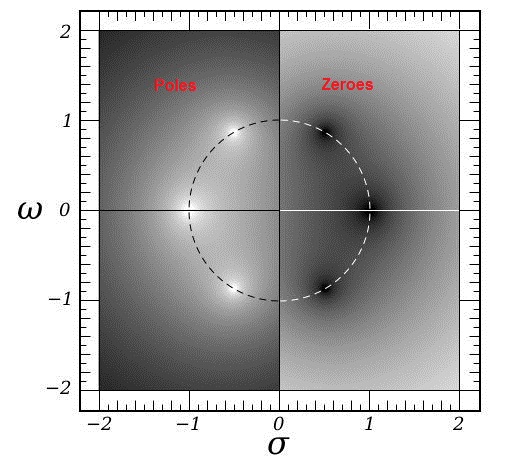
I actually built it in the Imperial College (London) electronics lab in about 1980. Used NE5534AN op-amps.
Thing is, we couldn't hear any difference whatsoever with the the circuit in place, or not in place. 😕
I have been going lockdown-wild with some mirror-symmetry experiments on the Euler Zeta(2) function today.
The basic idea is Euler Zeta(2) function which is: 1 plus 1/4 plus 1/9 plus 1/16 and so on..... adds up to Pi squared//6.
I did this with mirrors. Where it got interesting was with the 3 fold symmetry. The Neutron.
That's a full unit reflected by two half units. All is symmetry, IMO.
TBH, I have no Idea where 1/3 units apply. 😱
Look at this baby:
I actually built it in the Imperial College (London) electronics lab in about 1980. Used NE5534AN op-amps.
Thing is, we couldn't hear any difference whatsoever with the the circuit in place, or not in place. 😕
I have been going lockdown-wild with some mirror-symmetry experiments on the Euler Zeta(2) function today.
The basic idea is Euler Zeta(2) function which is: 1 plus 1/4 plus 1/9 plus 1/16 and so on..... adds up to Pi squared//6.
I did this with mirrors. Where it got interesting was with the 3 fold symmetry. The Neutron.
That's a full unit reflected by two half units. All is symmetry, IMO.
TBH, I have no Idea where 1/3 units apply. 😱
Attachments
Monsieur is tres drole... 😱
I thought I had explained earlier that this is the engineer's approach to analog filters without the algebra. It is a third order all-pass network represented by its Laplace transform. It has the phase response of two cascaded 3rd order butterworth filters. You can build them with op-amps, capacitors and resistors.

The transfer function is (1-s)(1-s+ss) / (1+s)(1+s+ss). But that is a bit long-winded IMO.
It was a little project I did which helped my course work in Telecoms. We also did stuff like The Fast Fourier Transform on the mainframe computer in "Fortran" in those days.
I thought I had explained earlier that this is the engineer's approach to analog filters without the algebra. It is a third order all-pass network represented by its Laplace transform. It has the phase response of two cascaded 3rd order butterworth filters. You can build them with op-amps, capacitors and resistors.
The transfer function is (1-s)(1-s+ss) / (1+s)(1+s+ss). But that is a bit long-winded IMO.
It was a little project I did which helped my course work in Telecoms. We also did stuff like The Fast Fourier Transform on the mainframe computer in "Fortran" in those days.
It's me you're talking to, Steve!I thought I had explained earlier...

I shall return when I can see some light at the end of the universe.

The thing I've learnt about Maths and Physics is we all have a ceiling beyond which we are ignorant. Main thing is to enjoy this Golden Age, where half the World's great minds are alive right now!
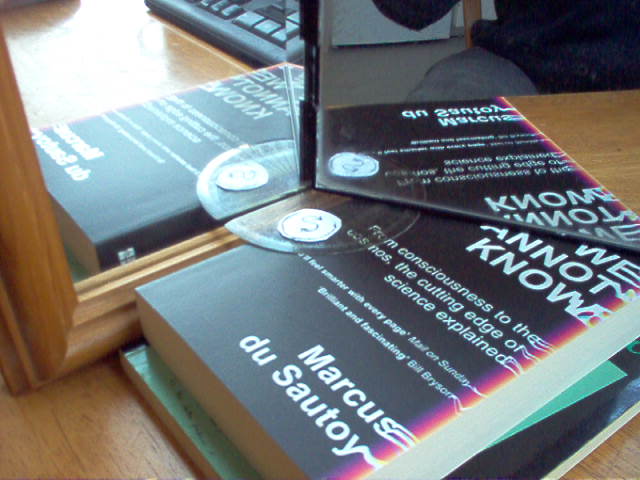
I have no idea what is going on with this slightly broken symmetry which seems related to the Quarks in The Neutron.
A nice little 3Blue1Brown video about Euler's Zeta(2) function here, if you like this sort of thing:
YouTube
We didn't even believe in Quarks in November 1974. The neutral (Strange Quark) Kaon had been around for 12 years, and I had read The Ambidextrous Universe by Martin Gardner.
Then came the electrifying news of the (Charm Quark) J/Psi or Gypsy in Scientific American. This was too much to deny. 1/3 charges really existed. 😱
I know I have no understanding of this stuff. But am enjoying Marcus Du Sautoy's book. Already I have learnt that Cosmic Inflation began about 3/4 into the current age of the Universe. He has done one about the Monster Group too. It's amazing. The Monster is one of the great discoveries of the C21, IMO. 😎
I have no idea what is going on with this slightly broken symmetry which seems related to the Quarks in The Neutron.
A nice little 3Blue1Brown video about Euler's Zeta(2) function here, if you like this sort of thing:
YouTube
We didn't even believe in Quarks in November 1974. The neutral (Strange Quark) Kaon had been around for 12 years, and I had read The Ambidextrous Universe by Martin Gardner.
Then came the electrifying news of the (Charm Quark) J/Psi or Gypsy in Scientific American. This was too much to deny. 1/3 charges really existed. 😱
I know I have no understanding of this stuff. But am enjoying Marcus Du Sautoy's book. Already I have learnt that Cosmic Inflation began about 3/4 into the current age of the Universe. He has done one about the Monster Group too. It's amazing. The Monster is one of the great discoveries of the C21, IMO. 😎
I'm a lazy sod, Steve!The thing I've learnt about Maths and Physics is we all have a ceiling beyond which we are ignorant.
I only studied sufficient maths to scrape my physics degree and fool the punters in the pub into thinking I was intelligent!
Amazing how convincing you can be when you employ a little 'charm'. 😉
No fooling the majority of the punters in this forum though!

I had no idea until I spent 'A Day at Symmetry Land'! YouTubeI have no idea what is going on with this slightly broken symmetry...
No fooling the majority of the punters in this forum though!
Perhaps it's the lack of "certain level of intoxication" of the participants.
Another aspect may be that the short list of "impressive phrases" learnt to put the "fellow humans" in their place, not only do the buggers remember what you said yesterday, and the phrases quickly run out, but also that the people you discuss with even remember stuff you said 3 seconds ago. Sometimes posts I wrote even a day or three before blow up in my face, seemingly to me completely out of context. But more likely it's my limited mental capacity.
I feel your pain Galu.
"My name is Kent, and it's been a while since I've been intoxicated. I blame this bloody virus thing!"
One can know a lot about a little, or know a little about a lot!
Be loud, be proud, be ignored. That's my motto! 😉
Be loud, be proud, be ignored. That's my motto! 😉
Lot of nonsense at this Forum, IMO. 🙄
In my beloved multi-way forum, 9/10 people waffle away without ever coming up with a circuit. So a complete waste of time, IMO! 😀
Me, I stick my neck out. We need to get on with it.
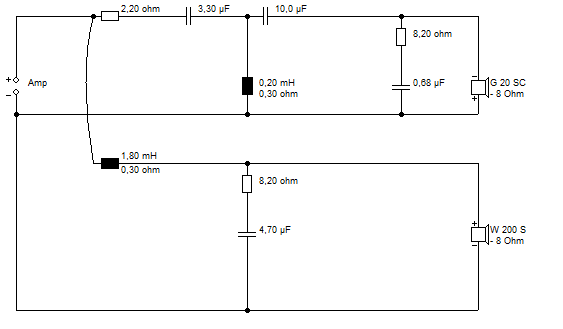
As you now know, the Third Order Butterworth filter hides a lovely hexagonal symmetry. That's why the capacitors have a 1:3 ratio. 😎
Lots of interest for those of us in Lockdown.
* SUPERMOON tonight. Visible in lovely clear skies. This is when the full moon appears unusually large due to the eliptical orbit. Naturally, next months total eclipse will be annular, because that is a small new moon.
* I have been wading through some of the mysteries of Physics:
Original Usenet Physics FAQ
I was baffled why there are only 8 gluons, but 9 combinations of the color charge. I think I get it now. These are mixed combinations that add up to neutral. Not just pairs. But still confusing.
* The wretched germ has claimed 67 poor souls in Portsmouth up to April 24. This made me very sad and a bit scared.
But my inner geek couldn't help noticing that 67 is a Heegner Number. 😱
Stay safe, everybody.
In my beloved multi-way forum, 9/10 people waffle away without ever coming up with a circuit. So a complete waste of time, IMO! 😀
Me, I stick my neck out. We need to get on with it.
As you now know, the Third Order Butterworth filter hides a lovely hexagonal symmetry. That's why the capacitors have a 1:3 ratio. 😎
Lots of interest for those of us in Lockdown.
* SUPERMOON tonight. Visible in lovely clear skies. This is when the full moon appears unusually large due to the eliptical orbit. Naturally, next months total eclipse will be annular, because that is a small new moon.
* I have been wading through some of the mysteries of Physics:
Original Usenet Physics FAQ
I was baffled why there are only 8 gluons, but 9 combinations of the color charge. I think I get it now. These are mixed combinations that add up to neutral. Not just pairs. But still confusing.
* The wretched germ has claimed 67 poor souls in Portsmouth up to April 24. This made me very sad and a bit scared.
But my inner geek couldn't help noticing that 67 is a Heegner Number. 😱
Stay safe, everybody.
I haven't seen a Usenet FAQ in a while, and I never made it over to physics (I mostly did rec.audio.* and sci.electronics.design). All the FAQs I recall were on one (sometimes somewhat large) webpage, but each of those topics links to a separate page!* I have been wading through some of the mysteries of Physics:
Original Usenet Physics FAQ
I know the name for the rate of change of acceleration: Jerk.
Oh, the sum of natural numbers, I saw where you posted That Evil Thing in an earlier post. Dunno why it's in that FAQ, that's math not physics. I saw a Numberphile video on that, it showed algebraic operations on infinite series that ended up with that particular (finite and negative) value. It's so counterintuitive (or even stronger words that get bleeped out here) that I felt like I was watching the old high school algebra trick of demonstrating that 1 equals 2 by starting with a = 1 and b = 1, then in the middle of several legit-looking operations there's a division by (a - b).
There was another video (I forget but maybe I can find it, I think I saw it from a math prof I follow on Twitter), this one on the Riemann Zeta Function, that also mentioned this series, and that one ALMOST made sense (either that or I'm ending up like Godel did).
I've got this book "Prime Obsession" that's about the Zeta function, but it doesn't go into enough technical detail for me, it seems the author, editor and publisher decided the topic is "too complex" for the ordinary reader to understand. I'm doubtful the author understands much more than he wrote. It might as well have a "scientist baffled" subtitle. I saw the title on the spine in the thrift store and as I was grabbing it I thought "this better be about prime numbers or I'm throwing it against the wall." It was, but it turns out not as much as I hoped.
That stuff (things smaller than the Proton/Neutron/Electron) always confused me too, and every year or two they added lepton or goo-on and I was a little bit more behind, but I don't feel too bad about not knowing much about it. I did (and do) have a strong interest in physics, and if I had gone for a degree in it I definitely would have learned all about the world of color, flavor and charm, and whatever other random words they came up with to describe those things.I was baffled why there are only 8 gluons, but 9 combinations of the color charge. I think I get it now. These are mixed combinations that add up to neutral. Not just pairs. But still confusing.
Because the college was there, because I had an interest in (and already some knowledge of) electronics, and because they accepted me, I went to college for Elecrical Engineering Technology, but only did three years work toward a degree, and managed to have an engineering career anyway. But I can imagine it turning out differently.
Again, I did have a strong interest in math, from readin Asimov non-fiction books (I also read his fiction) as well as Martin Gardner's "Mathematical Games" Scientific American columns and the book collections of them. There's a book I read only 15-20 years ago, and didn't come out until the 1980s anyway (after I had left college) that, had I read it in high school, I might have decided to pursue a math degree (though Southern Tech/SPSU/KSU Marietta Campus didn't offer a math degree, only engineering degrees when I went there so I would have had to go elsewhere - the story of getting there's something else, I had taken and passed the GED just weeks before). The book is "Journey Through Genius" and is suggested (by me) reading on the topic. It's a history of mathematicians featuring much of the actual math they did. The chapter on Newton (of course abbreviated, but there's a lot more there than inventing calculus and the argument with Leibniz about it) is worth the price of the book, showing (among other things) how he came up with all those fast-converging formulas for computing pi. I'd seem those formulas in the CRC Math Tables book but had no idea Newton had done them, much less how. IMHO all topics should be taught the way that book is written.
Last edited:
Martin Gardner and Isaac Asimov set the bar in popular Science writing. I have also enjoyed Simon Singh, Ian Stewart and Marcus du Sautoy.
In about 1999, I signed up for an evening class at Portsmouth University. AS Level Mathematics. Just wanted to see if the old Lemon still worked, since I have read that IQ declines with age and a liking for French wine.
Good thing was, for a mere £60, you got access to Portsmouth University library. You could read Einstein, Dirac and one I really got into: Elementary Mathematics from a Higher Standpoint by the legendary Felix Klein. Believe me, Klein didn't use determinants to solve quadratics. He turned them all into one master equation with projective geometry. Brilliant! There is really only one quadratic which can be viewed from different places, just like conics.
You also could read the latest copies of the American Mathematical Association. Fermat's Last Equation had just been proved, and the smart people had moved onto fractional and complex indices and transcendental numbers.
I suppose we really should be reading the greats directly. Which is why I am enjoying Leonhard Euler.
And filling notebooks up as we go along. Because that really helps you get a grip on this stuff. If I'm lucky, I now have 30 years to spend on this stuff. Time enough for 10 degrees! 😀
p.s. I got a C second time round. Got a B first time. I was tired that day, well that's my excuse...
In about 1999, I signed up for an evening class at Portsmouth University. AS Level Mathematics. Just wanted to see if the old Lemon still worked, since I have read that IQ declines with age and a liking for French wine.
Good thing was, for a mere £60, you got access to Portsmouth University library. You could read Einstein, Dirac and one I really got into: Elementary Mathematics from a Higher Standpoint by the legendary Felix Klein. Believe me, Klein didn't use determinants to solve quadratics. He turned them all into one master equation with projective geometry. Brilliant! There is really only one quadratic which can be viewed from different places, just like conics.

You also could read the latest copies of the American Mathematical Association. Fermat's Last Equation had just been proved, and the smart people had moved onto fractional and complex indices and transcendental numbers.
I suppose we really should be reading the greats directly. Which is why I am enjoying Leonhard Euler.
And filling notebooks up as we go along. Because that really helps you get a grip on this stuff. If I'm lucky, I now have 30 years to spend on this stuff. Time enough for 10 degrees! 😀
p.s. I got a C second time round. Got a B first time. I was tired that day, well that's my excuse...
Don't expect me to prove Fermat's Last Theorem - I couldn't even prove his first one! 😀
However, it was nice to see Sir Andrew Wiles presenting the trophy to the winning team from Imperial College, London at the end of the recent final of 'University Challenge'.
Fermat's Last Theorem proof secures mathematics' top prize for Sir Andrew Wiles | University of Oxford
However, it was nice to see Sir Andrew Wiles presenting the trophy to the winning team from Imperial College, London at the end of the recent final of 'University Challenge'.
Fermat's Last Theorem proof secures mathematics' top prize for Sir Andrew Wiles | University of Oxford
Solving a quadratic equation by completing the square is equally brilliant. The general solution represented by the formula containing the term b^2 - 4ac, the so called determinant, is derived by completing the square.system7 said:Klein didn't use determinants to solve quadratics. He turned them all into one master equation with projective geometry. Brilliant! There is really only one quadratic which can be viewed from different places, just like conics.
Code:
Consider the general quadratic ax^2 + bx + c = 0.
Dividing every term by a:
x^2 + (b/a)x + c/a = 0
Completing the square for x^2 + (b/a)x:
{x + b/(2a)}^2 - {b/(2a)}^2 + c/a = 0
{x + b/(2a)}^2 = {b/(2a)}^2 - c/a
{x + b/(2a)}^2 = {b^2/(4a^2} - c/a
{x + b/(2a)}^2 = (b^2 - 4ac)/(4a^2)
=> x + b/(2a) = +/-sqrt{(b^2 - 4ac)/(4a^2)}
=> x = -b/(2a) +/-sqrt(b^2 -4ac)/(2a)
=> x = {-b +/-sqrt(b^2 - 4ac)}/(2a)- Status
- Not open for further replies.
- Home
- Member Areas
- The Lounge
- What is the Universe expanding into..

